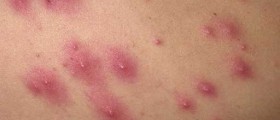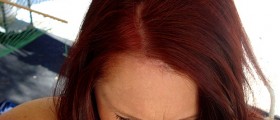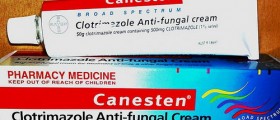The following grading system devised at the Royal Darwin Hospital may be used to determine management.
A: Distribution
Wrists, web spaces, feet or 30% TBSA
B. Crusting/shedding
Mild crusting ( 10 mm), profuse skin shedding
C. Past episodes
Never had it before
1–3 prior hospitalisations for crusted scabies or depigmentation of elbows, knees
≥ 4 prior hospitalisations for crusted scabies or depigmentation as above plus legs/back or residual skin thickening/ichthyosis
D. Skin condition
No cracking or pyoderma/impetigo
Multiple pustules and/or weeping sores and/or superficial skin cracking
Deep skin cracking with bleeding, widespread purulent exudates
Grade 1: total score 4–6
Grade 2: total score 7–9
Grade 3: total score 10–12
The dose of ivermectin is 200 μg/kg for adults and children over 14 kg, rounded up to nearest 3 mg, and taken after a fatty meal to aid absorption.
Grade 1: 3 doses – days 0, 1,7
Grade 2: 5 doses – days 0, 1, 7, 8, 14
Grade 3: 7 doses – days 0, 1, 7, 8, 14, 21, 28
A topical scabicide is applied every second day for the first week, and then twice a week until cured.
Permethrin 5% cream or benzyl benzoate 25% emulsion for patients 6 months of age
Crotamiton 10% for infants under 6 months
Sometimes, additional 5% tea tree oil or sulphur ointment
Keratolytic creams are used on scaly plaques on alternate days to scabicide. First, soften crusts in warm water. Then apply either of:
Salicylic acid 5% to 10% in sorbolene cream
Lactic acid 5% plus urea 10% in sorbolene cream.
The treating dermatologist or infectious disease physician should carefully re-examine the patient to decide when to stop treatment.
A combination regimen for the treatment of crusted scabies devised by the US Centers for Disease Control (CDC) recommends:
Topical 5% permethrin or topical 5% benzoyl benzoate applied daily for seven days, then twice weekly until cure;
Oral ivermectin (200 mcg/kg/dose) given on days 1, 2, 8, 9, and 15 (add days 22, 29 if infestation is severe).
A: Distribution
Wrists, web spaces, feet or 30% TBSA
B. Crusting/shedding
Mild crusting ( 10 mm), profuse skin shedding
C. Past episodes
Never had it before
1–3 prior hospitalisations for crusted scabies or depigmentation of elbows, knees
≥ 4 prior hospitalisations for crusted scabies or depigmentation as above plus legs/back or residual skin thickening/ichthyosis
D. Skin condition
No cracking or pyoderma/impetigo
Multiple pustules and/or weeping sores and/or superficial skin cracking
Deep skin cracking with bleeding, widespread purulent exudates
Grade 1: total score 4–6
Grade 2: total score 7–9
Grade 3: total score 10–12
The dose of ivermectin is 200 μg/kg for adults and children over 14 kg, rounded up to nearest 3 mg, and taken after a fatty meal to aid absorption.
Grade 1: 3 doses – days 0, 1,7
Grade 2: 5 doses – days 0, 1, 7, 8, 14
Grade 3: 7 doses – days 0, 1, 7, 8, 14, 21, 28
A topical scabicide is applied every second day for the first week, and then twice a week until cured.
Permethrin 5% cream or benzyl benzoate 25% emulsion for patients 6 months of age
Crotamiton 10% for infants under 6 months
Sometimes, additional 5% tea tree oil or sulphur ointment
Keratolytic creams are used on scaly plaques on alternate days to scabicide. First, soften crusts in warm water. Then apply either of:
Salicylic acid 5% to 10% in sorbolene cream
Lactic acid 5% plus urea 10% in sorbolene cream.
The treating dermatologist or infectious disease physician should carefully re-examine the patient to decide when to stop treatment.
A combination regimen for the treatment of crusted scabies devised by the US Centers for Disease Control (CDC) recommends:
Topical 5% permethrin or topical 5% benzoyl benzoate applied daily for seven days, then twice weekly until cure;
Oral ivermectin (200 mcg/kg/dose) given on days 1, 2, 8, 9, and 15 (add days 22, 29 if infestation is severe).
Loading...

















